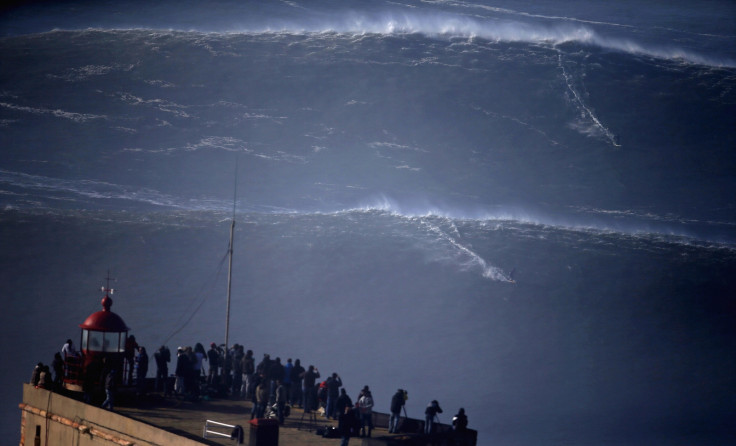Huge wave higher than 6-storey building spotted in Atlantic between UK and Iceland
Gigantic waves often occur in North Atlantic due to underwater plateaus and freak wind patterns.

A giant 60ft (19m) wave has been spotted in the North Atlantic - the tallest ever recorded by a buoy, according to the World Meteorological Organisation (WMO). The huge wave, taller than a six-storey building, formed in a remote region between the UK and Iceland on 4 February 2013, but has only just been verified three years later.
Previously, the highest wave recorded by a buoy was 18.275m, also in the North Atlantic, in December 2007. Along with other unusual and extreme phenomena, freak waves are recorded by the WMO's Global Weather & Climate Extremes Archive.
Waves in the open sea are measured from the crest of one wave to the trough of the next. The area between Iceland and the UK produces large waves because of the wind patters in the area, which create "intense extra-tropical storms" or "bombs," according to the WMO.
The winds at the time of the wave were around 43.8 knots (50.4 miles per hour). "This is the first time we have ever measured a wave of 19 metres. It is a remarkable record," said WMO Assistant Secretary-General Wenjian Zhang.
"It highlights the importance of meteorological and ocean observations and forecasts to ensure the safety of the global maritime industry and to protect the lives of crew and passengers on busy shipping lanes."
Though the wave is the highest recorded at sea, they can get even higher when they approach land as they are pushed upwards. The 2004 Boxing Day tsunami in South East Asia, which killed 230,000 people, reached 50 feet in places, but far higher waves have been recorded.
In 1958, a wave generated by a landslide in Alaska's Lituya Bay was up to 100 feet high, and destroyed trees 1,700 feet above sea level. Remarkably, a man named Howard Ulrich, who was out fishing with his son on the bay, managed to ride his boat over the wave and both he and his son survived.
© Copyright IBTimes 2025. All rights reserved.






















